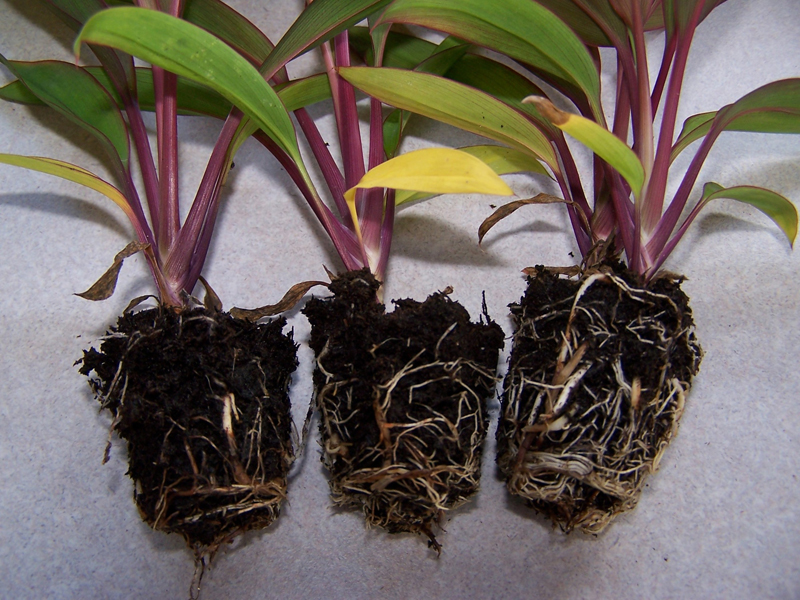
Don’t Jump to any Conclusions
MLD: One of the things that costs growers dearly is guessing what is wrong with their crops. I wish they would seek the help of a diagnostic lab rather than blaming themselves or jumping to conclusions about which pest or pathogen is lousing up their plants. There are so many easy mistakes. Say you have poinsettias, and you see small spots. A grower who assumes it is scab, a disease caused by the fungus Sphaceloma poinsettiae, might spray with Daconil. If the problem is really the bacterial leaf spot caused by a Xanthomonas, which causes spots of about the same size, they will only be spreading the disease with their Daconil applications. A correct diagnosis could make a big difference in disease management.
ARC: I am not in favor of tank mixing but sometimes it seems like the best approach. This can be especially true with root diseases since they are almost impossible to tell apart by the naked eye. Rotted roots all look more or less alike whether they are caused by Fusarium, Rhizoctonia, Pythium, Phytophthora or Cylindrocladium. How many times have you seen mixed infections in your lab? They seem more common at times than a single pathogen causing a root disease. What would you do about root diseases in the absence of a lab diagnosis?
MLD:I would treat it the same way you are suggesting one can use a combination material, such as Banrot, or develop one’s own combination by choosing a la carte and preparing a tank mix. But before running to the chemicals, it would be smart to check the soluble salts levels to make sure you haven’t zapped the roots with a fertilization + dry-down. If I thought it might be a black root rot problem because it was a petunia, calibrachoa, vinca, pansy or viola that showed sickly roots, I would check the pH as well and make sure it wasn’t too high. There are things a grower can check for him/her self that are critical for root health management: after doing the cultural checks they can deploy a fungus control plus a water mold control. Being me, I’d always want to know which pathogen was after my daisies. Far too often a grower guesses, and guesses wrong; it is much wiser to use a combination product or tank mix rather than using a fungicide that won’t touch the problem you actually have. Have you seen growers guess wrong?
ARC: Actually, I think it is a rare grower who does the tests you are suggesting before using a fungicide. Guessing wrong is more common than guessing right in my experience. Unfortunately, some consultants lead their clients to think they can diagnose root diseases by eye alone since they themselves do the very same thing. In our effort to simplify things, we get it wrong, wrong, wrong! How comfortable are you at the guessing (even an educated guess)?
MLD:I can tell you quite cheerfully that I get it wrong all the time; that’s why I’m glad I have a lab to back up or fix my first guesses! I culture roots on corn meal agar, totally convinced it’s going to be Pythium, only to see in a few days that there is an unhappy Rhizoctonia growing out from all the root pieces. Growers get it wrong all the time too; they’ve told me their fertilizer was wrong on the petunias, but when I put the roots under the microscope there are spores of Thielaviopsis grinning up at me. Diagnosis is not about guess work, it’s about doing the soil tests, the foliar analyses, the water tests and the pathogen and pest identifications so that we learn what exactly was going on that led to the symptoms. Without the right diagnosis, problems will repeat themselves, making the profit margin thinner and thinner.


 Video Library
Video Library 




















